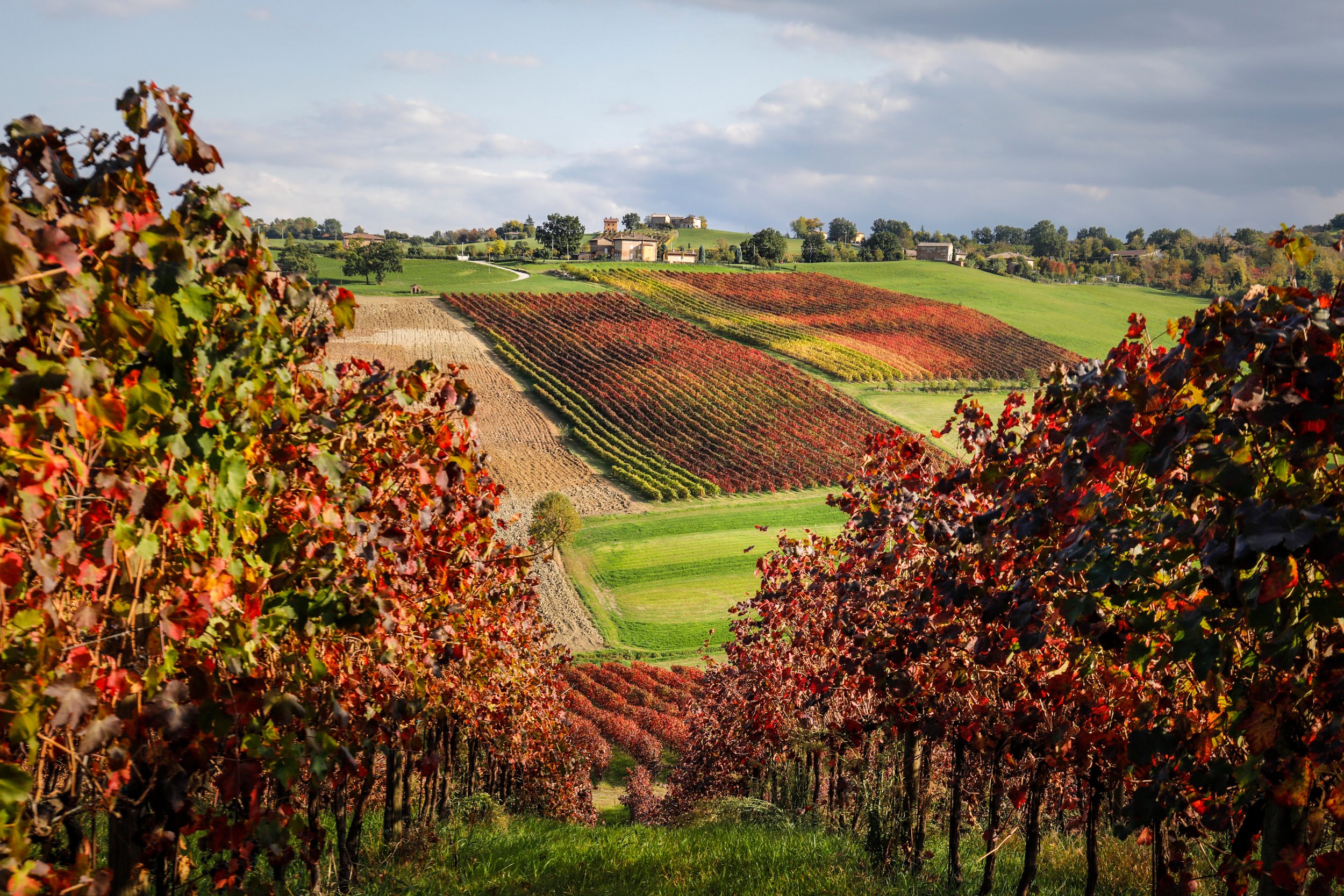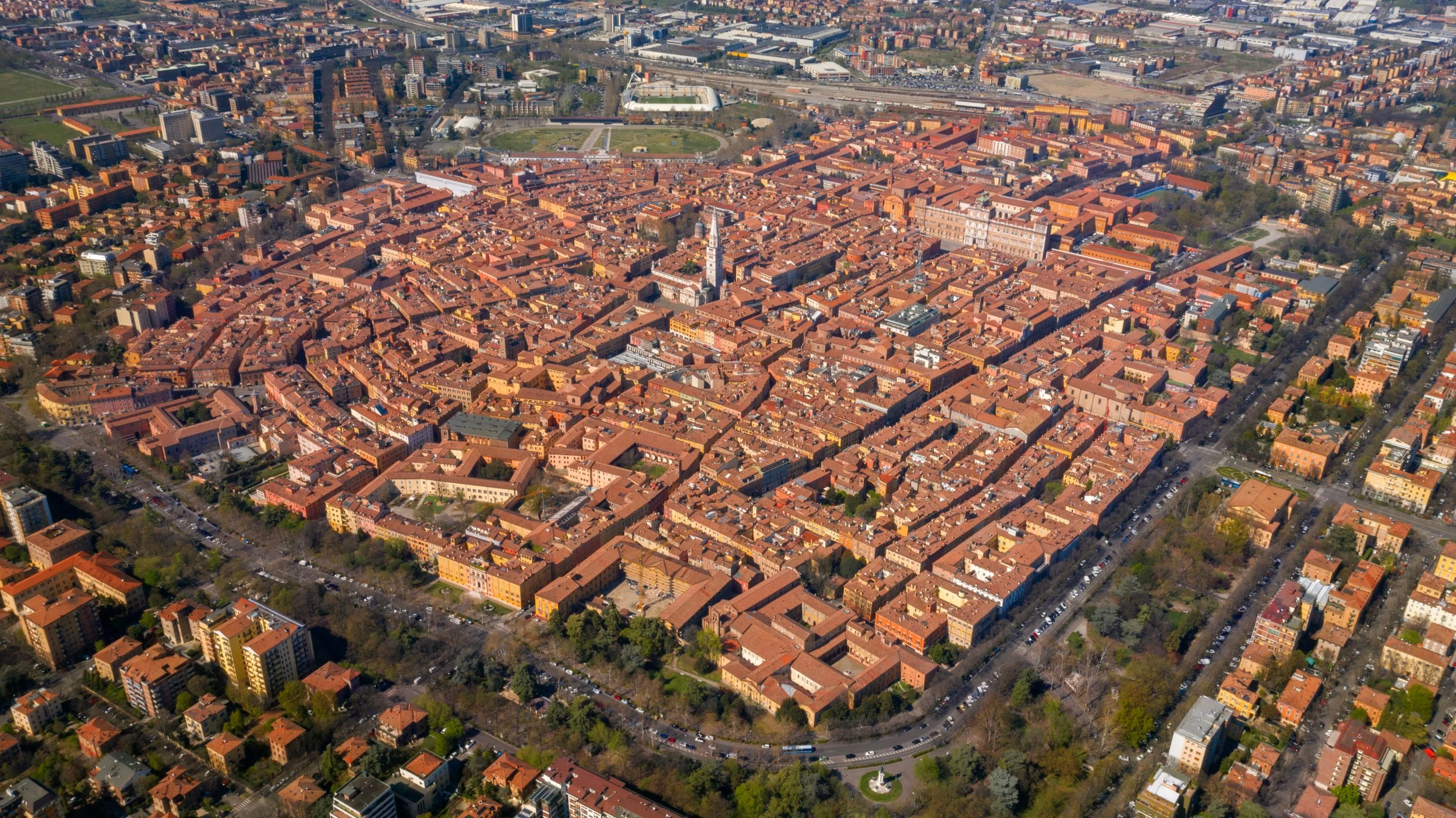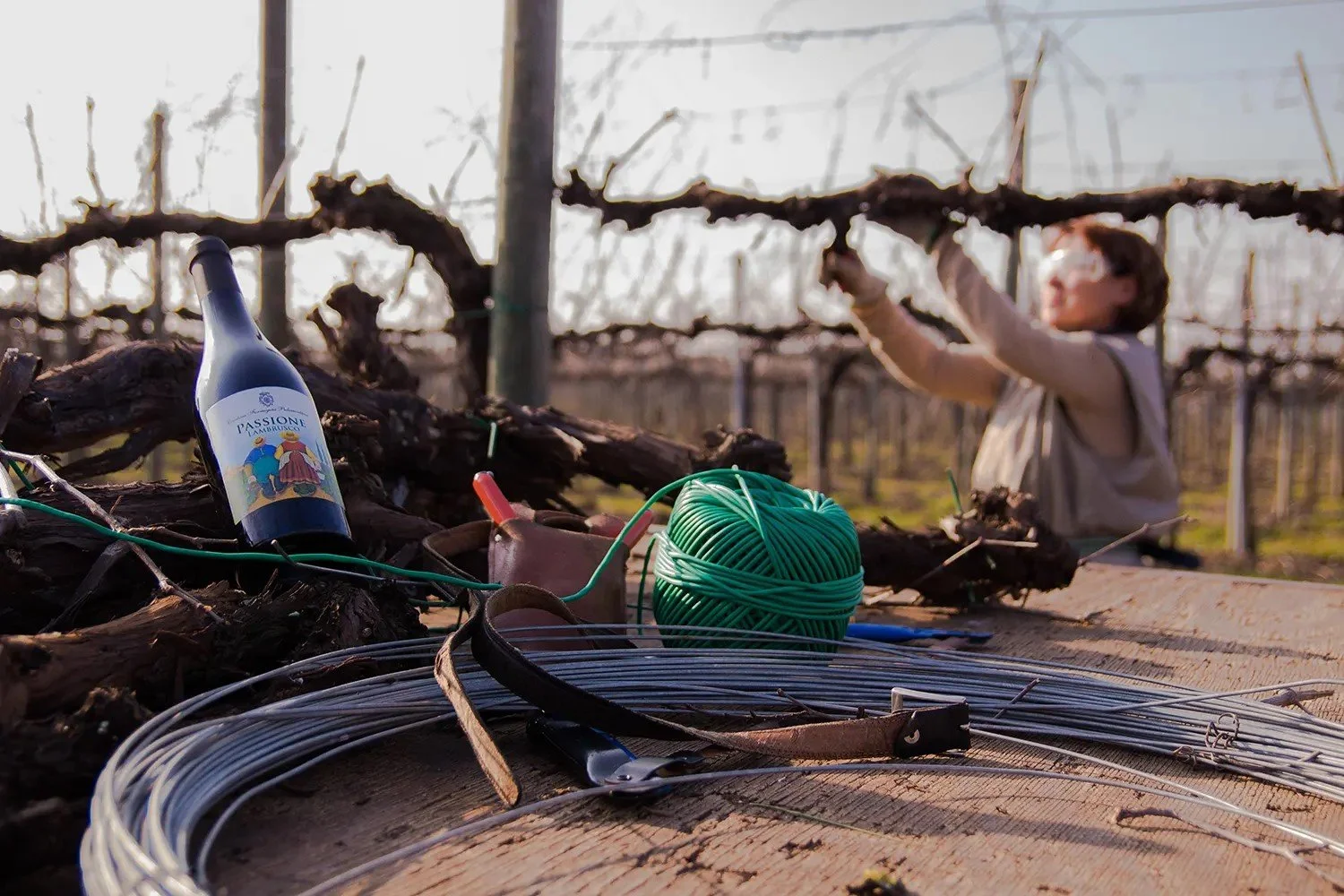Part 1 – Ancient Roots: The Timeless Legacy of Lambrusco Grasparossa
If you don’t know, Lambrusco is a hearty and versatile red wine that comes in many varietals and blends, almost always sparkling and ranging from dolce (sweet) to dry (secco). But if you are here, you have probably had a glass or two and are looking to learn more. At Fratelli del Vino, we are partial to this wine because it is a part of our roots and one of the reasons we started this business. For the past decade, we have attended the Lambrusco Festival in Castelvetro di Modena and enjoyed getting to know this wine in its many forms. We have also gotten to see firsthand its renaissance in the U.S., and honestly, it’s about time!
Lambrusco Vines with red leaves ready for harvest in the rolling hills of Modena
In this 3-part series about Lambrusco, we will begin by exploring the history of this grape and this wine. While the historical stuff can be a bit dry and complex, that’s okay because that’s how we like our wine anyway, especially our Lambruscos! If you would rather read about Lambrusco in modern culture, try Part 2, or if you want to skip straight to the food and wine, then check out Part 3.
When you open a bottle of our Rosso Fosco, you're not just enjoying wine—you’re drinking living history. Each sip is a portal through time: one of early vine gatherers, meticulous Roman vintners, and steadfast custodians of medieval tradition. In Part 1 of this Blog Series, we’ll explore how Lambrusco Grasparossa di Castelvetro, nurtured by millennia of culture and landscape, is deeply intertwined with the History and Culture of Emilia Romagna.
1. From Forager to Farmer: Iron Age Beginnings
Our story begins in the Iron Age, around 1100–700 BCE, amid the Villanovan culture—considered the earliest face of what would become the Etruscan civilization—spreading across Emilia-Romagna. Its people crafted urns and worked iron, shaping both society and agriculture Wikipedia.
As these early communities transitioned toward settled life, they took a crucial step: cultivating wild vines. This embryonic form of viticulture, a blend of forager and farmer, allowed wild Vitis vinifera to flourish with human guidance—protecting vines, selecting productive specimens, and creating the “lambruscaia,” regions of wild vine clusters we recognize as Lambrusco’s primal identity Travel Emilia Romagna.
2. The Etruscan Promise: Cultivation and Trade
By the 7th century BCE, the Etruscans had mastered the art of winemaking. Archaeological finds, including grape pips, pollen, and olive-terraced vineyards, confirm that viticulture wasn’t just surviving—it was thriving Chicago Journals.
The Etruscans practiced vite maritata, training vines up trees—a method still used in Emilia-Romagna today—demonstrating viticulture’s environmental harmony and stylistic continuity Travel Emilia Romagna.
Even more revealing: trade. Export amphorae, discovered from Vulci to the Po Valley, show that Etruscan wine traveled—cementing the region’s place in an ancient exchange network and hinting at robust wine production Chicago Journals.
3. Rome’s Refined Touch: Efficiency, Scale, Literary Praise
With Roman ascendancy, viticulture gained structure. Studies of grape pips near Chianti (c. 300 BCE–100 CE) show that Roman farmsteads introduced planting rows, pruning, grafting—setting the stage for modern viticulture methods PMC.
Technological advances followed: sophisticated pressing tools, amphorae for fermentation and storage, and the early use of sulfur to keep wine fresh—all enabling wine that could withstand travel and time winesuncovered.com.
Literature, too, memorialized the vine. The poet Virgil refers to the “Lambrusca Vitis”—a wild vine with tangy fruit sprouting at field edges. Strabo noted barrels “bigger than houses,” and Pliny the Elder admired the vine’s fiery red leaves in autumn—all suggesting local pride and the vine’s distinctive character Travel Emilia Romagna.
And then, there’s Cato the Elder. In De Agri Cultura, he emphasized careful farm selection and noted that “two-thirds of an acre could yield enough wine to fill 300 amphorae” from efficient vineyard practices—underscoring early Roman sophistication and sustainability.
4. Medieval and Renaissance Continuity: Surviving Disruption
After Rome’s fall, viticulture faced turmoil—but was preserved, often thanks to monasteries. Wine became intertwined with worship, medicine, and monastic self-sufficiency, and vine-growing endured within abbey walls—a silent bridge between eras winesuncovered.com.
In Emilia-Romagna, local power holders like Matilda of Canossa wielded both influence and local wines to their advantage. Legend says her troops defeated Henry IV’s army near Sorbara in 1084, after feeding them rich local Lambrusco—its soothing effect portrayed as strategic as any weapon Travel Emilia Romagna.
As time advanced, innovations followed. The introduction of cork and glass bottles in the Renaissance allowed for closed fermentation—unlocking Lambrusco’s signature sparkle and portability Travel Emilia Romagna.
City center of Modena, once called Mutina by the Villanovans in the Iron Age.
5. Mapping the Continuum
1920-Present
With the formation of Cantine Formigine Pedemontana in 1920 Lambrusco and specifically Rosso Fosco continues the Lambrusco Grasparossa legacy as true to form from its ancient roots and a modern favorite among this category.
Hand -Trained Lambrusco vines for the production of our Rosso Fosco
6. Why Rosso Fosco Is History in a Glass
Rosso Fosco isn’t just a wine—it’s a historical narrative culled from ancient roots, Roman persistence, medieval resilience, and Renaissance innovation. It:
Honors Etruscan origins in its vine training and terroir.
Reflects Roman agricultural wisdom in its structure and consistency.
Upholds medieval tradition through generational care and local reverence.
Celebrates modern finesse born of Renaissance breakthroughs and winemaking technology.
In the hands of Cantina Formigine Pedemontana, Rosso Fosco preserves a living continuum.
Conclusion
From its wild-foraging roots through Roman refinement, medieval endurance, and technological renaissances, it becomes difficult to discern how much Lambrusco was shaped by the land and the people of the Italic Peninsula, and how much it directly contributed through its enduring legacy. That continued lineage gives Rosso Fosco its depth, making every pour a nod to millennia of Italian culture and craftsmanship.
In Part 2, we'll shift gears—literally and figuratively—to explore modern Emilia-Romagna: its unmatched craftsmanship, the marriage of precision and beauty in its cars, and how Lambrusco reflects that spirit today.
For more check out these resources:


